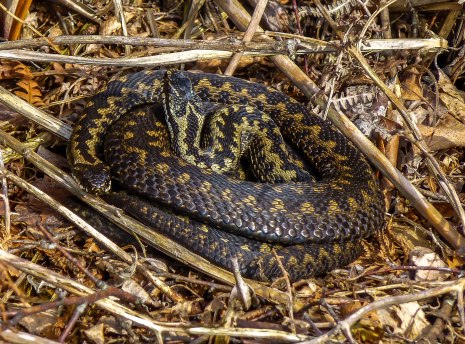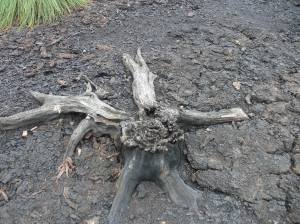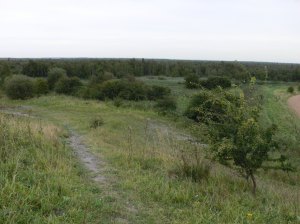Keep on badgering away campaigners …. recent Badger Trust updates as circulated by the Trust
Representatives of the Badger Trust met with the DEFRA Secretary of State on 3 March 2015 and described the meeting as very useful and at which there was a frank exchange of views on the following key issues:
Cull Roll Out
We [the BT] pressed the Secretary of State (SoS) to confirm plans for roll out post May 7th, should Tories return to office.
SoS was not willing to commit herself on this issue, other than to say culling would remain part of the TB reduction strategy.
We pointed out that any plans for cull roll out must involve full consultation with all key stakeholders and a financial impact assessment.
We also discussed the need to engage local communities, the police and local authorities in this process.
We also raised concerns over Natural England (NE) and DEFRA officials being involved in recent farm meetings held in the South West, to discuss extension of the culls.
We also pointed out that Gloucestershire had fallen well short of its cull targets and even the Chief Vet had confirmed it was a border line decision if this pilot area should continue.
Since leaving the meeting, we have received confirmation from NE via our solicitor at Bindmans that the Gloucestershire cull licence could be revoked, due to failures by the cull contractors. We have used this information in follow up media interviews.
Misleading information from vets and NFU on the impact of culling (see section in blue at the bottom of this post)
We did raise serous concerns about the misleading information on the impact of the badger culls coming from Roger Blowey and the NFU.
We pointed out that any move by Ministers to give credibility to these reports would undermine public confidence in the cull policy further and call into question the integrity of DEFRA and its science based policy process.
We also drew attention to a recent statement by the Chief Vet, that any reductions in bovine TB was due to cattle measures not badger culling or vaccination.
SoS did not make any effort to support the Roger Blowey or NFU claims, but she would not commit to getting Nigel Gibbens to issue a further statement on this issue.
We will follow this request up in writing following the meeting.
Testing badgers for TB
We criticised SoS for not ensuring badgers culled were tested for TB.
We also pointed out that European Food Safety Authority (EFSA) had confirmed 232 dead badgers were tested in the UK in 2013 for an EU wide survey. Test results showed an infection rate just over 15% in line with RBCT data.
SoS seemed to have little knowledge of the EFSA survey, but her officials were clearly uncomfortable with us bringing up this issue and they stated the test data could have come from Northern Ireland.
We confirmed we would follow up in writing with a request for more information on the EFSA data including if any of the badgers used came from the cull zones.
We also criticised Owen Paterson for making claims that badgers had a TB disease rate of 40% plus and called on the SoS to ensure any future culls would involve full testing of badgers for TB.
SoS did not give any assurance on this issue, but it’s clear the low level of disease in badgers is causing concern in DEFRA & we will keep pressing on this issue.
TB rates in England
We discussed at some length the picture emerging of falling TB rates in England as a result of tightening of cattle measures.
We also went over some of the historical policy mistakes which had led to the increase in TB over the last 15 years, particularly restocking after foot and mouth.
SoS showed a worrying lack of awareness in this area and a willingness to keep playing the Ireland and New Zealand card to support culling.
We used the meeting to take apart the justification for culling based on the New Zealand and Ireland experiences and left the SoS with key data showing how cattle measures were working (compiled by Jan Bailey).
Annual Testing
We pressed hard on the growing support for annual testing of cattle for TB in England, not only from wildlife groups but also vet, farm and landowning organisations.
We said the NFU excuse that this is too costly, does not hold water after the tax payer has spent £15 million plus on the culls to date.
SoS listened with interest and her officials confirmed a further tightening of test measures was being considered, but they did not go as far as to say this would involve Annual Testing across all of England.
We will continue to press this issue following the meeting, as we are clearly making progress in this area.
Badger Vaccination
We said we were pleased that the SoS had recognised the value of badger vaccination as a tool in reducing the spread of TB in badgers.
We pointed out that the Badger Trust was working with farmers and landowners across the country to increase the level of badger vaccination.
We gave our broad support to the Badger Edge Vaccination Scheme, but pointed out that we expected key Badger Trust vaccination projects in areas such as Derbyshire and Cheshire to receive funding under the scheme.
SoS showed a willingness to ensure this would be the case and we will follow up with DEFRA officials following the meeting.
Badger Persecution
We finished the meeting by referring to the DEFRA Risk Registers we recently obtained via the High Court.
We pointed out that officials and Ministers knew that the cull policy had a high risk of increasing badger persecution.
We made it clear to SoS that we had most definitely seen a significant increase in badgers being illegally killed and badger setts destroyed by landowners and farmers since the culls started.
SoS made it clear that she condemned all wildlife crime and agreed with her officials to issue some form of statement on this issue following the meeting.
Wider views on the meeting
The Secretary of State seemed nervous and at times not on top of her brief.
Nigel Gibbens the Chief Vet was very noticeable by his absence.
The only officials present were her Private Secretary and representatives from the legal and TB policy units.
The Secretary of State took the unusual step of saying at the start of the meeting it would be considered private and off the record.
On walking down Whitehall earlier I nearly bumped into Liz Truss as she headed into Downing Street. I can only think the call for radio silence on the meeting came from the Prime Minister himself.
We gave no commitment not to share the discussions in the media (particularly as ITV & BBC were waiting to film interviews on steps of DEFRA after meeting).
Media Coverage
We have had extensive media coverage following the meeting with interviews on ITV West, BBC South East, BBC Radio Gloucestershire, BBC Radio Sussex and in the national & regional press.
Conclusion
We were never going to see a U Turn in the cull policy as a result of this meeting.
However we put the Secretary of State under significant pressure and we made a very strong case for why the cull policy should be halted.
We showed we had the majority of the public, scientists and even politicians on our side.
We knew our facts and we were no doubt better briefed and had a clearer understanding of TB policy than the Secretary of State who is responsible for its implementation.
We made some useful progress on the need for tighter cattle testing controls, more badger vaccination and a stronger response from the Government on badger persecution and wildlife crime.
We also left no one in any doubt that cattle not badgers are the key factor in TB spread.
Badger Trust can be very proud of the fact we are the only wildlife or conservation NGO to have such a meeting with either Owen Paterson or Liz Truss in last 4 years
Our [BT] campaigning, lobbying & legal challenges have taken us to a place many much larger and better funded NGO’s have not been able to reach.
![800px-Deceased_Meles_meles_-_head[1]](https://thmcf.files.wordpress.com/2013/09/800px-deceased_meles_meles_-_head1.jpg?w=300&h=225)
Badger Trust calls on NFU to stop misleading the public over the impact of badger culling
Ahead of a meeting with the Environment Secretary Liz Truss on the 3 March, the Badger Trust has called on the National Farmers’ Union to stop misleading the public by making claims over the impact of badger culling on TB rates in cattle in the Gloucestershire and Somerset cull zones, which have no scientific foundation and are not supported by Government data from the pilot badger culls.
At the NFU Annual Conference in Birmingham on Tuesday 24 February, the NFU President Meurig Raymond stated: “I want to stress that in the two pilot areas in Somerset and Gloucestershire we are already seeing that TB incidence on farms has declined. Not just by a small amount either, in the Somerset Pilot area TB incidence on farms has decreased from 34% to 11% compared with two years’ ago”.
He then went on to say: “just two days’ ago, one of our Gloucestershire members was given the fantastic news that his farm is now clear of TB for the first time in 11 years. He is very clear that the only thing that’s changed on his farm is that we are now doing something to control the disease in wildlife”.
When making these statements the NFU President at no point confirmed that it was far more likely these reductions in TB (which have also been seen outside of the cull zones) were due to tighter testing, movement and biosecurity controls forced on the UK farming sector by the European Commission in 2012. He also made no mention of the fact that DEFRA have not released any data on the pilot culls to support any claims about the impact of badger culling on TB rates in cattle.
In responding to the claims by the NFU, the CEO of the Badger Trust said:
“Nigel Gibbens, the DEFRA Chief Veterinary Officer, recently stated that: “the fall in TB outbreaks in cattle herds, cannot be attributed either to the pilot culls or in Wales to their badger vaccination programme. It is to do with continued strengthening of the cattle measures”.
“Meurig Raymond seems to have forgotten these important facts when it comes to his NFU conference speech.
“The Badger Trust would never make any claims about the impact of badger vaccination without scientific evidence to back it up and we expect the NFU to do the same, when it comes to making claims about the impact of badger culling.
“We must deal in facts not fiction when it comes to assessing the impact of the badger culls on lowering bovine TB. When it comes to real facts the case against the badger cull policy is damning.
“Approximately £15 million has been spent killing 2476 badgers to date (£6058 a badger). None of these culled badgers were tested for TB, but data from a Government-led scientific trial and results from badgers tested by DEFRA in 2013 for the European Food Safety Authority, indicate a disease rate no higher than 15%.
“Many of these badgers were shot by poorly trained marksmen with no effective monitoring and took up to 10 to 15 minutes to die a long painful death by multiple gunshot wounds.
“This is despite the fact that the DEFRA Chief Scientist Ian Boyd confirmed at an NFU TB conference in November 2014, that the transmission rate of TB from badgers to cattle is less than 6%. The key route of infection is cattle to cattle transfer.”
The above two pieces are taken from BT press release sand assuming that the facts and statistics cited are accurate then it seems astonishing that a well respected industry spokesgroup would seek to promulgate unsubstantiated statements? Many of the public at the moment are wise to ‘political’ PR so it would seem far better if any party in a discussion were to ensure provision of all the facts to secure credibility?







































![800px-Deceased_Meles_meles_-_head[1]](https://thmcf.files.wordpress.com/2013/09/800px-deceased_meles_meles_-_head1.jpg?w=300&h=225)




































“I think the most interesting observation was made to me by a senior politician who said, we accept your science, but we have to offer the farmers a carrot. And the only carrot we can possibly give them is culling badgers”.
Badgers suffer needlessly, are subject of digging, baiting and dog fighting and as if that isn’t enough they appear to be a particular target for the current Government and Natural England?